The technical principle of intelligent fingerprint lock
Fingerprint refers to the uneven texture on the front side of the finger. These lines are different in pattern, breakpoint and intersection. They are called "features" in information processing. These features have been medically proven for each. Fingers are different, and these features are unique and permanent. Therefore, the above characteristics of fingerprints become the most important evidence for identification and are widely used in public security criminal investigation and judicial field.
Configuration structure
The core components of the fingerprint lock: motherboard, clutch, fingerprint collector, password technology, microprocessor (CPU), intelligent emergency key. As a fingerprint lock, the most important thing is the algorithm chip, that is, the heart is better. Your mechanical part is better. If you have a higher degree of recognition, you can open your fingerprints. What use is there?
Second, no matter what lock, its essence is still a mechanical product. Fingerprint lock is a model for transforming traditional industries with modern high technology. Its core technology is first of all grasped by mechanical technology. Mechanical technology mainly consists of the following five aspects:
1. The reasonable design of the front and rear panels, that is, the appearance, is a sign that is significantly different from similar products. The more important internal structure layout directly determines the stability and function of the product. This process involves many aspects such as design, mold making, and surface treatment. Therefore, the more manufacturers of styles, the relative development and design capabilities are stronger and the stability is better.
2, lock body. That is, the mother of the bolt that can be connected to the door. The quality of the lock directly determines the life of the product. This is the most core technology in mechanical technology, and it is also the lifeblood of fingerprint locks. It is also the most difficult problem in the industry. 95% of the existing production units can not solve the problem, mainly through outsourcing. A strong manufacturer has the ability to design and develop locks. Therefore, the lock body is the core component that truly reflects the technical level of the manufacturer, and is also the core technology of the entire fingerprint lock.
3. Motor. The motor is the drive. Just like the computer's driver software. It is the connection equipment of electronics and machinery, and the transformation center of power plays a major role in connecting the upper and lower. If the motor stops working or obstacles, the lock will automatically open and cannot be locked.
4. Fingerprint module and application system. This is the basis of the electronic part. Fingerprint module, the peer function is almost the same, mainly depends on the chip and algorithm.
LCD screen
The operation of the liquid crystal display is more convenient and simple, and the fingerprint lock is more intelligent. Configuring liquid crystals is not a simple material accumulation, but also involves the rational design of software and circuitry. In general, the use of this technology is like the fingerprint lock itself instead of the mechanical lock, which is the inevitable development of technology and market!
chip
At present, the domestic DSP fingerprint lock professional processing chip has been successfully developed in China, and domestic manufacturers are programming the algorithm software; most fingerprint lock manufacturers use domestic fingerprint algorithm chips.
sensor
Fingerprint sensors are mainly optical sensors and semiconductor sensors.
Fingerprint module
Basic Features
Safety
The fingerprint lock is a safety product produced by a precise combination of electronic components and mechanical components. The most essential of fingerprint locks is nothing more than safety, convenience and fashion. The rejection rate and the falsehood rate are undoubtedly one of the most important indicators. They can also be called the rejection rate and the misrecognition rate. There are several ways to express it:
(1) The resolution of the fingerprint head used, such as 500 DPI.
The accuracy of existing optical fingerprint sensors is generally 300,000 pixels, and some companies use 100,000 pixels.
(2) The percentage is used: for example, some parameters are written.
Of course, this is a parameter for each company's publicity, whether it is 500 DPI or rejection rate. "0.1% is just a concept for ordinary users, and there is no way to detect it.
(3) The statement that “rejection rate and falsehood rate†are mutually different is correct to a certain extent. This seems to be a mathematical concept of “hypothesis testingâ€: at the same level, rejection The rate of truth is high, the rate of falsehood is low, and vice versa. This is an inverse relationship. But why is it correct to a certain extent, because if the level of technology and technology is improved, these two indicators can be reduced, so it is essential to improve the technical level. In order to speed up certification, some manufacturers use the practice of lowering the security level to create fast and recognizable artifacts at the expense of security. This is more common in sample locks or demo locks.
(4) According to the relevant standards, the security level of fingerprint anti-theft locks for household entrance doors should be level 3, that is, the rejection rate is ≤0.1%, and the false recognition rate is ≤0.001%.
durable
1. In theory, one more function is more than one program, so the possibility of product damage is even greater. However, this is compared between manufacturers of the same technical strength. If the technical strength is high, then their product completion can be more functional and better than those with poor technical strength.
2. A more critical point is the comparison of the benefits of multiple features and the risks associated with functionality. If the benefits of the function are great, then it can be said that this increase is worthwhile. Just like you drive a speed limit of 100 yards, you need to pay the price of a violation or a car accident if you step on the gas pedal. If this feature doesn't bring you any benefit, then this feature is superfluous. So the key point is not to consider what "one more risk for one function" but the risk value is not worth bearing.
3. Just like the networking function, on the one hand, the stability of fingerprints in the process of network transmission is still not certain. On the other hand, it is necessary to destroy the existing decoration. More importantly, once it is invaded by viruses, there will be no "medicine" to cure. . Once connected to the network, the likelihood of being attacked will increase dramatically. For security technologies such as telephone alarms, the relevant equipment must be separately set up, and there is a problem of indoor radiation and false alarms. Especially the latter, due to external factors such as technology and environment other than the fingerprint lock itself
Anti-theft
1. According to the anti-theft performance classification, the popular fingerprint lock is divided into two types: ordinary fingerprint lock and anti-theft fingerprint lock.
Ordinary fingerprint lock, there is not much difference from the original electronic lock, mainly to use fingerprint authentication, but it can not be used for existing domestic security door. This kind of fingerprint lock does not have the hook of heaven and earth, and can not use the security system of the security door (on the market). Some imported fingerprint locks do not meet national industry standards and can only be used for wooden doors).
The fingerprint anti-theft lock is safer and can be applied to standard security doors and wooden doors. This type of lock can automatically or semi-automatically connect the security door with the heaven and earth lock system without affecting the performance of the original security door.
2. The anti-theft performance is different, and the market price is also very different. The price of the fingerprint lock with mechanical anti-theft function is obviously higher than that of the ordinary fingerprint lock without the anti-theft function. Therefore, when purchasing a fingerprint lock, you must first select the corresponding lock according to the door.
3. The anti-theft fingerprint lock should be used for household use, so the requirements for the door are low, no modification, and convenient after-sales maintenance. The engineering fingerprint locks are generally purchased in bulk, and the door factory can be required to provide the matching doors that meet the product installation. Generally, the most direct way to distinguish fingerprint locks from engineering fingerprint locks or household fingerprint locks is to see if the length and width of the rectangular lock body strips (guide plates) under the door locks are 24X240mm (the main one), and a few are 24X260mm. 24X280mm, 30X240mm, the distance from the center of the handle to the door is generally about 60mm.
The main function
Fingerprint lock function: fingerprint open, password open, card open, emergency key open, now also increases the way the phone is remotely opened, allowing consumers to trust and choose fingerprint locks. The main function of the fingerprint lock is to be safe and convenient. In addition to the door opening function, there are generally functions of adding, deleting and clearing fingerprints. The high-performance fingerprint lock is also equipped with a human-machine dialogue system such as a liquid crystal touch screen. The intelligent level is high, the operation is relatively convenient, and the operation guidance and query usage records are provided. And built-in parameters, setting status and other functions. The fingerprint management functions are: adding fingerprints, deleting fingerprints, clearing fingerprints, setting system parameters, and many other functions.
Power supply
The power supply mode of the fingerprint lock is generally divided into two types. One type uses four 5th alkaline batteries, which can generally be used for one year or so; the other is two sets of circuit systems, two sets of four 5th batteries, and a set of fingerprint circuits. A set of circuits for passwords, usually about one and a half years. (Specifically depending on function, power consumption design, number of uses, etc.) According to the industry standard production of anti-theft fingerprint lock, it should be equipped with an emergency power supply interface, which can be powered by 9V laminated battery.
Attachment 1: Lock cylinder
At present, the lock core grades on the market are roughly classified into A grade, B grade, super B grade, C grade, super C grade, D grade and the like. Their origins date back to 1994 when the state promulgated the "GA/T73-94" mechanical anti-theft lock standard, which defines the A-class lock and the B-class lock. The main constraint is that the A-level lock prevents the technology from unlocking more than 1 minute. Locking technology unlocking takes more than 5 minutes. That is to say, according to national standards, there are currently only two types of locks, A and B, on the market. Their main difference is the time when the technology is turned on, not the style.
Super B grade, C grade, super C grade, D grade and other grades are the enterprise standard grades established by the lock manufacturer itself. It seems to be higher than the national standard A grade and B grade, but it is actually a kind of behavior formulated by the enterprise itself. The rating standards of each enterprise may be different, so there will be a market situation in which the lock core level is messy today.
The first type of single-row marble lock is commonly known as A-class lock.
This type of lock uses a marble structure, usually 7 marbles, so there are about 7 dots of different shades on the key. These dots are developed from the serrations of the original sawtooth structure, and the structure is very simple. It can be opened using the unlocking hook direct technique or the tin foil unlocking tool can be opened quickly.
The second type of double row of marbles is commonly known as Class B.
This kind of lock core, commonly known as the B-class, is to increase the marbles on the basis of the A-class to achieve the double-row, the principle and the A-level approximation, but due to the increase in the amount of marbles, the technical unlocking will be more difficult, and the time of opening is used. It will be longer. The latest tin foil unlocking tool has developed a separate mold for this type of lock, which allows for quick unlocking, and the key gun can also be used to unlock the lock. The technical unlocking time is more than 5 minutes, which belongs to the national standard B-class locks.
The third type of double row + blade is commonly called super B level
This type of lock adds a blade groove to the B-stage, which greatly improves the safety of the original marble structure, but it is more prone to failure because it is too complicated. The biggest highlight is that the blade structure is used for the first time in civil locks. Of course, the disadvantage is that the blade structure is too small and too weak.
The fourth full blade lock is commonly known as C-class
The full blade structure, the key to the full milling slot is the blade lock.
The fifth other common name is C+ or higher
The anti-theft function is added to the blade lock, and the steel beam and the all-stainless steel blade lock core are added. This design is designed to prevent violent interruption of the design. Although the C-class blade lock is technically powerful, it is no different from the ordinary lock cylinder in terms of anti-violence.
Secondly, there is also a lock cylinder with idling function, which can resist the violent destruction of electric drills and enhance the ability of anti-tech open. It is the top technology at present.
Appendix 2: Fingerprint Identification Technology
At present, there are mainly four types of fingerprint image acquisition technologies applied in the market: optical scanning devices, temperature difference sensing fingerprint sensors, semiconductor fingerprint sensors, and ultrasonic fingerprint scanning.
First, optical recognition technology
The use of optical technology to capture fingerprints is the oldest and most widely used technology. Place the finger on the optical lens, and use the prism to project it on the charge coupled device (CCD) under the illumination of the built-in light source, and then form the ridge line (the line with a certain width and direction in the fingerprint image) is black and valley. The lines (recessed portions between the lines) are white, digitized, multi-gray fingerprint images that can be processed by the fingerprint device algorithm.
Optical fingerprint acquisition technology has obvious advantages: it has been tested for a long time, to some extent adapt to temperature variations, can reach a higher resolution of 500 DPI, etc., the most important is low price. There are also obvious disadvantages: due to the requirement for a sufficiently long optical path, a sufficiently large size is required, and excessively dry and excessively greasy fingers will also deteriorate the effect of the optical fingerprint product.
The limitations of optical fingerprint sensing are reflected in the potential fingerprints (potential fingerprints are left after the finger is pressed on the platen), which not only reduces the quality of the fingerprint image, but also may cause two fingerprints to overlap, which is obviously difficult to meet. Practical application needs. In addition, platen coatings and CCD arrays can cause losses over time, which may result in reduced quality of the captured fingerprint image. However, it has disadvantages such as the inability to perform live fingerprint identification and poor applicability to wet and dry fingers.
The optical fingerprint recognition system can only scan the surface of the finger skin or scan the dead skin layer because the light cannot penetrate the surface of the skin (dead skin layer), but it cannot penetrate the dermis layer. In this case, the cleanness of the finger surface directly affects the recognition effect. If there is more dust on the user's finger, an identification error may occur. Moreover, if people follow a finger and make a fingerprint hand model, it is also possible to identify the system, which is not very safe and stable for the user.
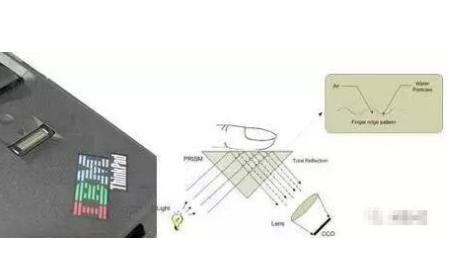
Second, temperature difference sensing identification technology
The temperature difference sensing technology is based on the principle of temperature sensing. Each pixel is equivalent to a miniaturized charge sensor, which is used to sense the temperature difference between a finger and the chip image area to generate a representative image information. Electrical signal.
It has the advantage that the fingerprint image can be acquired within 0.1 s, and the sensor has the smallest volume and area, that is, the so-called sliding fingerprint reader is currently adopted. The disadvantage is: subject to temperature limitations, the length of time, the finger and the chip are at the same temperature.
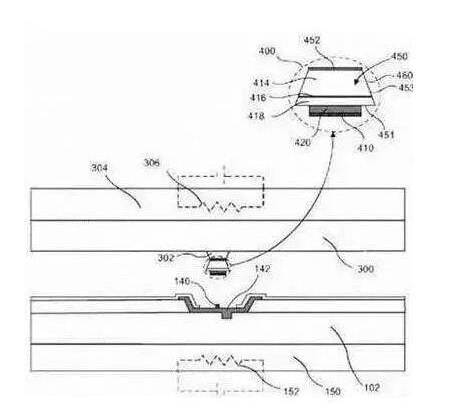
Third, semiconductor silicon sensing technology (capacitive identification technology)
In the late 1990s, technologies based on semiconductor silicon capacitance effects matured. The silicon sensor becomes one of the plates of the capacitor, and the finger is the other plate. The capacitance difference between the 嵴 and 峪 of the fingerprint line of the hand is compared with the smooth silicon sensor to form an 8-bit grayscale image.
The capacitive sensor emits an electrical signal that will pass through the surface of the finger and the layer of dead skin, directly to the living layer (dermis layer) of the finger skin, and directly read the fingerprint pattern. Due to the depth of the dermis, the sensor can capture more real data, is not susceptible to dust on the surface of the finger, improve the identification accuracy, and effectively prevent identification errors. Semiconductor fingerprint sensors include semiconductor pressure sensitive sensors, semiconductor temperature sensing sensors, etc. Among them, semiconductor capacitive fingerprint sensors are the most widely used.
The semiconductor capacitive sensor determines the position of the position based on the difference between the size of the capacitance of the fingerprint and the capacitance of the semiconductor capacitive sensing particles. The working process is to pre-charge the capacitive sensing particles on each pixel to a certain reference voltage.
When the finger touches the fingerprint representation of the semiconductor capacitor, since the 嵴 is convex and the 峪 is concave, according to the relationship between the capacitance value and the distance, different capacitance values ​​are formed at the 嵴 and 峪. The discharge is then performed using a discharge current. Since the capacitance values ​​corresponding to 嵴 and 峪 are different, the speed of discharge is also different.
The pixels under the arm (high capacitance) discharge slowly, while the pixels under the arm (low capacitance) discharge faster. Depending on the discharge rate, the positions of 嵴 and 峪 can be detected to form fingerprint image data.
Unlike optical devices, which use manual adjustment to improve image quality, the capacitive sensor uses automatic control technology to adjust the fingerprint image pixels and the sensitivity of the local range of the fingerprints, and combines the feedback information to generate high-quality images in different environments. Due to the local adjustment capability, even images with poor contrast (such as areas where the finger is pressed lightly) can be effectively detected, and the sensitivity is increased for these pixels at the capture instant to generate a high quality fingerprint image.
Semiconductor capacitor fingerprint sensors have the advantages of good image quality, generally no distortion, small size, and easy integration in various devices. The electronic signal emitted by it will pass through the surface of the finger and the layer of dead skin, reaching the living layer (dermis layer) of the finger skin, and directly reading the fingerprint pattern, thereby greatly improving the safety of the system.
The most important advantage of semiconductor silicon sensing technology is the ability to achieve live fingerprint recognition. Better image quality than optical technology can be achieved on smaller surfaces, with resolutions of 200-300 lines on a 1cm & TImes; 1.5cm surface (smaller surfaces also result in cost reductions and can be integrated into more Small device). Small size, low cost, high imaging accuracy, and low power consumption make it ideal for use in security and high-end consumer electronics. It is called the second generation fingerprint recognition technology after optics.
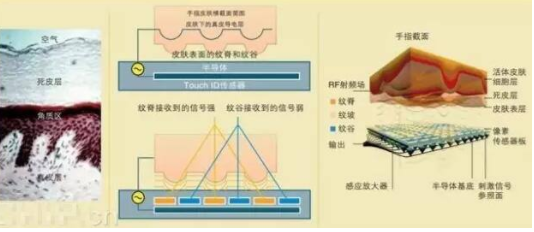
Fourth, ultrasonic recognition technology
Ultrasonic fingerprint acquisition is a new type of technology. Its principle is to use ultrasonic waves to have the ability to penetrate materials, and to produce echoes of different sizes depending on the material (the ultrasonic waves are absorbed, penetrated and reflected differently when they reach different material surfaces). ). Therefore, by using the difference in skin impedance between the skin and the air, it is possible to distinguish the position where the fingerprint is located.
The ultrasonic frequency used by the ultrasonic technology is 1 & TImes; 104 Hz-1 & TImes; 109 Hz, and the energy is controlled to the extent that it is not destructive to the human body (same as the medical diagnosis). Ultrasonic technology products can achieve the best precision. It requires less cleaning of fingers and planes, but its acquisition time will be significantly longer than the above two types of products, and it is expensive and cannot achieve live fingerprint recognition. Use is rare.
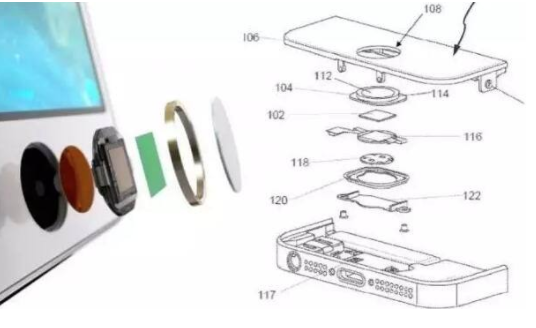
Micro-optical fingerprint recognition technology
At present, whether it is the mainstream - capacitive fingerprint sensor, or rookie - ultrasonic fingerprint sensor, you need an additional fingerprint sensor, but the former needs to open a hole in the screen, the latter can be hidden under the screen.
In 2017, Apple and Huiding Technology introduced a fingerprint recognition technology based on micro-optical sensing technology. This technology cleverly integrates the display screen and the fingerprint sensor to support fingerprint recognition on multiple screens.
The working principle of the fingerprint recognition sensor is “beginning†in optical mode, “sheng†in capacitive mode, and “continued†in ultrasonic type and micro optical type. After a round of laps, it is now back to the path of optical sensing. The difference is that today's advanced micro-optical sensing technology is enough to cause a full "face" innovation in smartphones. What is the principle of a miniature optical fingerprint sensor? The technology used by Huiding Technology and Apple is different. Huiding Technology has not revealed the details yet, but we can understand Apple's MicroLED technology.
MicroLED technology is still in the laboratory development stage before 2012. With Apple's acquisition of LuxVue, which has multiple patented technologies for MicroLED, in May 2014, the market's focus on this technology has reached unprecedented heights. MicroLED technology, namely LED miniaturization and matrixing technology. Refers to a high-density, small-size LED array integrated on a single chip. Each pixel of the display can be addressed and individually driven to illuminate, reducing the pixel distance from millimeters to micrometers.
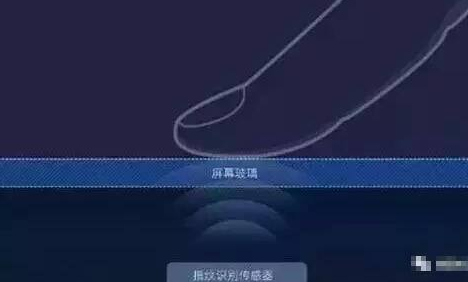
MicroLED display is to thin, miniaturize and array the LED structure design. Its size is only about 1~10μm, and the MicroLED is transferred to the circuit board in batch mode. The substrate can be hard and soft. On the opaque substrate, the protective layer and the upper electrode are completed by a physical deposition process, and the upper substrate can be packaged to complete the microLED display with simple structure.
According to the US Patent and Trademark Office, on February 14, 2017, Apple's US Patent No. 9570002 "Interactive Display Panel with Integrated Infrared Diode" was presented, showing the touch display using MicroLED sensing technology and how to implement fingerprint recognition. Technical features.
Specifically, a separate infrared transmitting tube is coupled to the sensing diode as a drive, and a selection circuit is used to create the sub-pixel circuit. Due to their small size, these infrared diodes can be embedded in the display substrate with RGB LEDs or mounted on the microchip before being integrated into the substrate.
In the fingerprinting operation, integrated pixels (so-called "interactive pixels") that integrate red, green, blue, infrared light-emitting diodes, infrared detectors, and other color arrays at very high resolution The specific area or a few lines of the screen of the panel are scanned to the user's fingerprint information.
When the distance reaches a distance sufficient to sense, a bitmap is generated and the system is notified of the approximate positioning data. In some cases, the bitmap includes incident light intensity information that allows for deep analysis of the object and its surface. For example, by examining the dark and bright spots of the bitmap, the sample system can detect the corresponding ridges and wrinkles in the user's fingerprint. Thereby achieving the function of fingerprint recognition.
Fingerprint recognition technology is the mainstream technology of biometrics technology, and is the mainstream technology of identity authentication. It has been widely used in various industries. Now with the fingerprint function device, there must be a physical button for you to scan a fingerprint, but with the development of touch and display chips, highly integrated, the future development trend is any location, we can complete fingerprint recognition on the screen . Embedded fingerprint recognition appears at the core, so any restrictions do not affect the equipment manufacturer's industrially designed equipment. As the integration of fingerprint recognition and touch display technology becomes more and more mature, it will become more and more extensive, for example, fast payment, identification, personalized preference customization, etc., and it is likely to replace the password with fingerprint recognition technology.
RAM/RFM Middle Frequency Water Cooled Capacitors
RAM/RFM Middle frequency water cooled capacitors
Water Cooled Capacitors,Medium Frequency Capacitor,Intermediate Frequency Capacitors
YANGZHOU POSITIONING TECH CO., LTD. , https://www.cnpositioning.com